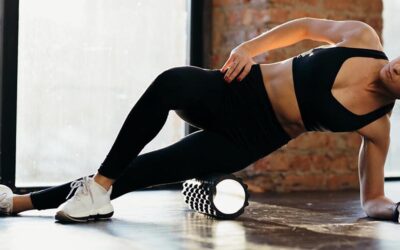Here at RISE Physical Therapy, we often employ strategies of dynamic stretching. We have all been taught the “old school” style of static stretching, i.e. holding stretches for an arbitrary amount of time, often 10-second holds. In recent years, new research has been done to determine if static or dynamic stretching has any true benefit. The results may be surprising.
What are Static and Dynamic Stretching?
Dynamic stretching is a strategy used to improve mobility while moving through a range-of- motion, often in a manner that looks like the activity or sport that is going to be performed. Static stretching is holding a stretch without movement, usually only at the end-range of a muscle.
Static versus Dynamic Stretching: Current Concepts
Time and time again, recent research has shown that static stretching may actually decrease performance! This has been shown in decreased sprint times in runners, decreased height of jumps in basketball players, decreased agility in soccer players, and decreased force-production in both elite women and men athletes. In contrast, dynamic stretching showed positive benefit in speed, power, and agility. More importantly, dynamic stretching has been proven to actually decrease risk of injury in both recreational and elite athletes.
Researchers believe that static stretching has no direct long-term harm; however this form of stretching will temporarily (but significantly) decrease the ability of a muscle to produce force. This decreased muscular strength places an athlete’s joints at risk of injury by decreasing the body’s ability to stabilize and control motion. This can lead to tears and sprains of ligaments and strains of muscles. Obviously, these are unwanted issues. In fact these are the problems that people are trying to avoid by performing stretches.
Dynamic stretching has actually been shown to significantly increase the ability of a muscle to produce force. This has huge implications for athletes, as dynamic stretching can improve muscular performance throughout a muscle’s entire range-of- motion. This effect can protect the body’s joints during activity and actually prevent injuries that would have otherwise occurred following a standard static stretching routine. These are the effects that people are usually looking for when employing a stretching program.
How to Perform Dynamic Stretches
Since dynamic stretching is a little different for most people, it is recommended that individuals seek some training in how to perform dynamic stretches prior to starting a dynamic stretching program. It is particularly beneficial to seek a Licensed Doctor of Physical Therapy who is trained in current concepts of dynamic stretching, like those at RISE Physical Therapy. All of our therapists are either Fellows or certified in Applied Functional Science, the most current form of physical therapy that looks at an individual’s functional needs and can design an individualized dynamic stretching program to directly benefit that person. The needs of a sprinter will drastically differ from the needs of a basketball player, weightlifter, or soccer player, for example.
In order to perform dynamic stretching, a person usually sinks into, and out of, a stretch. They hold the end-range for just a few seconds and then take the joint through more of its range-of- motion when compared to a static stretch. For some examples of how to perform dynamic stretches, take a look at our other blog posts (like Hips Don’t Lie – How to Unlock Tight Hips by Dr. Martin Nguyen).
Hopefully this post has helped you understand some of the potential downfalls of performing static stretching, and opened your eyes to the benefits of dynamic stretching. Stay tuned for more ways to improve your health and performance, and prevent future injuries.
![dynamic-stretches[1] Dynamic Stretches animated chart](https://www.risephysicaltherapy.com/wp-content/uploads/2023/04/dynamic-stretches1.jpg)


